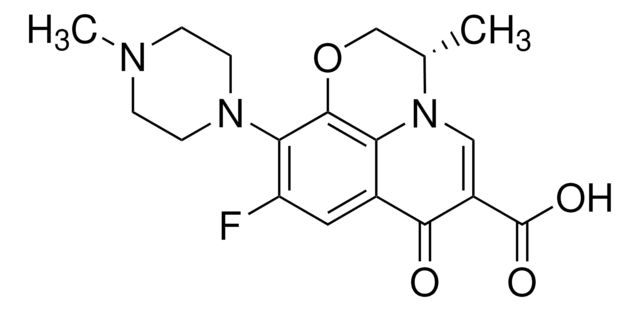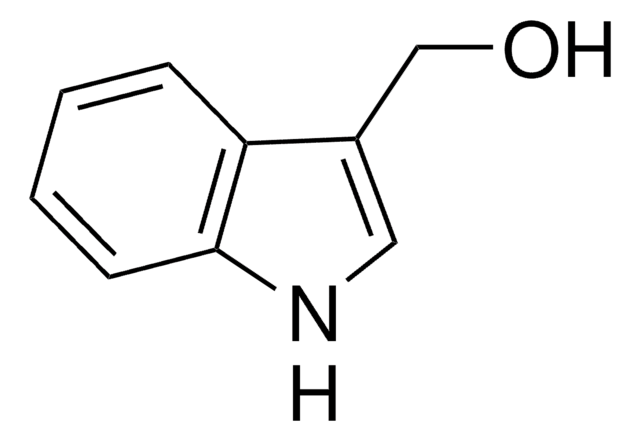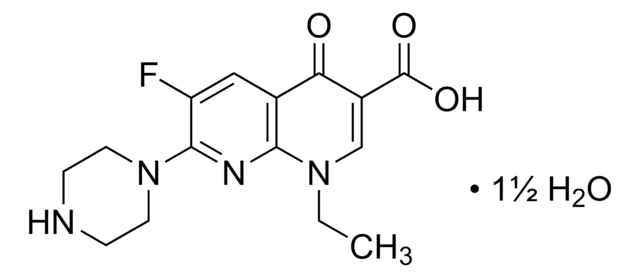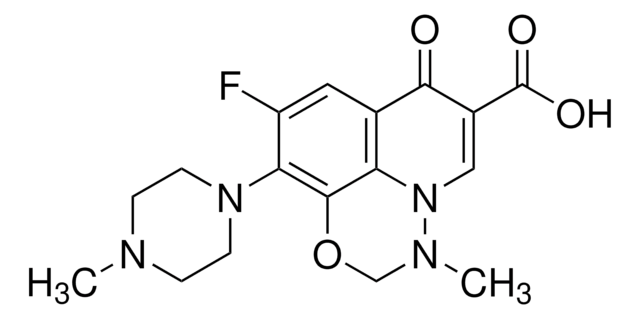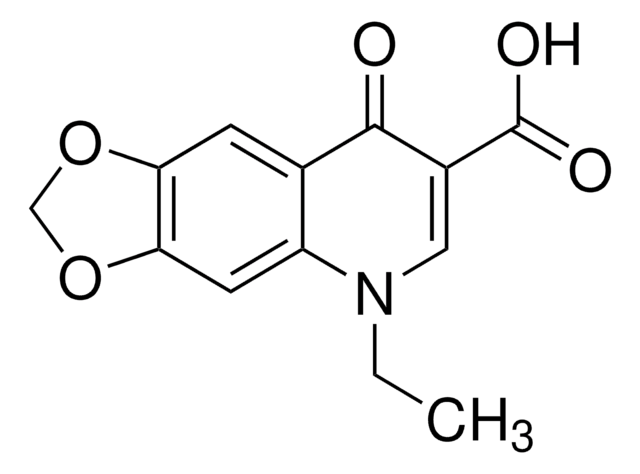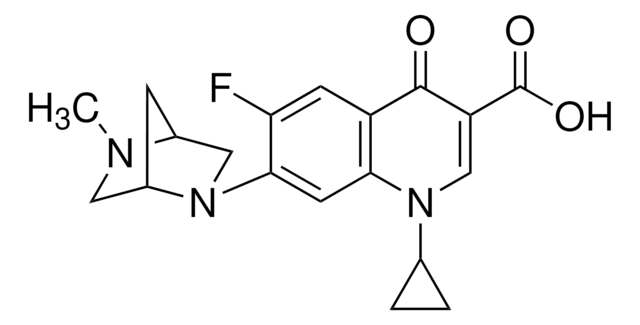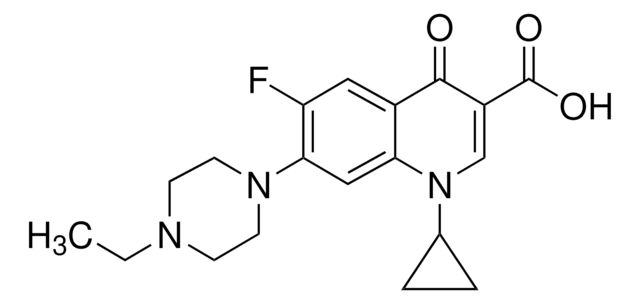Key Documents
L2906
Lomefloxacin hydrochloride
Synonim(y):
1-Ethyl-6,8-difluoro-1,4-dihydro-7-(3-methyl-1-piperazinyl)-4-oxo-3-quinolinecarboxylic acid
About This Item
Polecane produkty
pochodzenie biologiczne
synthetic
Poziom jakości
kolor
white to off-white
spektrum działania antybiotyku
Gram-negative bacteria
Gram-positive bacteria
Tryb działania
DNA synthesis | interferes
enzyme | inhibits
temp. przechowywania
−20°C
ciąg SMILES
Cl.CCN1C=C(C(O)=O)C(=O)c2cc(F)c(N3CCNC(C)C3)c(F)c12
InChI
1S/C17H19F2N3O3.ClH/c1-3-21-8-11(17(24)25)16(23)10-6-12(18)15(13(19)14(10)21)22-5-4-20-9(2)7-22;/h6,8-9,20H,3-5,7H2,1-2H3,(H,24,25);1H
Klucz InChI
KXEBLAPZMOQCKO-UHFFFAOYSA-N
Opis ogólny
Zastosowanie
Działania biochem./fizjol.
Certyfikaty analizy (CoA)
Poszukaj Certyfikaty analizy (CoA), wpisując numer partii/serii produktów. Numery serii i partii można znaleźć na etykiecie produktu po słowach „seria” lub „partia”.
Masz już ten produkt?
Dokumenty związane z niedawno zakupionymi produktami zostały zamieszczone w Bibliotece dokumentów.
Klienci oglądali również te produkty
Nasz zespół naukowców ma doświadczenie we wszystkich obszarach badań, w tym w naukach przyrodniczych, materiałoznawstwie, syntezie chemicznej, chromatografii, analityce i wielu innych dziedzinach.
Skontaktuj się z zespołem ds. pomocy technicznej

